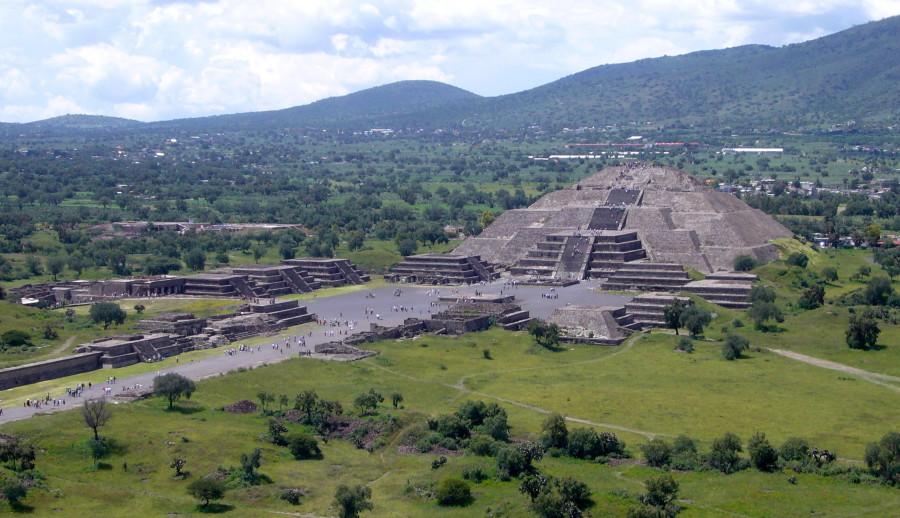Mercury Discovered in Teotihuacan Could Herald Even Greater Discoveries
On Friday, April 24, Sergio Gómez unearthed a large amount of the toxic metal liquid mercury beneath the Temple of the Feathered Serpent in the ancient city of Teotihuacan in central Mexico. The discovery comes during a six-year excavation of the sacred tunel untouched for 1,800 years.
According to archaeologists, the thick walls blocking access to the tunnel were demolished about 1,800 years ago, presumably to leave something important at the end of the tunnel. It was filled by the people of Teotihuacan with mud, rocks and debris, ostensibly as protection for whatever was deposited at the end. The excavation of this tunnel has resulted in thousands of artifacts, including statuary and other remnants of ancient life. However, it has slowed recently due to mud, excessive humidity and now the necessity of protection against the unhealthy influence of liquid mercury.
Mercury is toxic and capable of destroying the human body after prolonged exposure, meaning that it had no real purpose for the ancient peoples of Teotihuacan. However, according to Rosemary Joyce, a professor of archaeology at the University of California at Berkeley, liquid mercury has been discovered at three separate sites all over Central America. Gómez speculated that it may symbolize an underground river, similar to the idea of the Greek River Styx.
The health effects of mercury include a “pins and needles” feeling in the hands and feet, muscular weakness, lack of coordination and difficulty walking, speaking and hearing. The vapors emitted by liquid mercury can lead to problems with brain and nervous system development, as well as death if overexposed.
Gómez believes the discovery of this mercury could be a herald to the discovered of a tomb, perhaps of a king or other leader. This would a major discovery simply due to the mystery of Teotihuacan. The city was built after the Maya civilization ended, and no tomb has ever been discovered. There are no murals or carvings depicting a single ruler, so little is known about the inhabitants of the city that they have yet to be given a name. Teotihuacan boasts huge stone pyramids that could have housed as many as 200,000 people at the height of this civilization, between 100 and 700 CE. However, the city was abandoned hundreds of years before the Aztecs took power in the 14th century CE.
Among the other artifacts discovered, there are jade figurines, finely carved statuary, pottery and masks, all inlaid with quartz. All the artifacts date from around 100 CE.
There are several competing theories over how the people of Teotihuacan were ruled. One theory states that they were ruled by dynasties similar to the dynasties that ruled the Mayans. However, another theory, postulated by Mexican archaeologist Linda Manzanilla, states that the city was run by four co-rulers, taking into account the lack of royal portraits or carvings. A third hypothesis, suggested by Professor Annabeth Headreck of the University of Denver, describes a fluid ruling structure with power vested in offices or in several strong families that traded power to maintain a balance. Headreck also offered the idea that the power may have rested with a military instead. If a tomb is discovered, it could put all these theories to rest.
In an interview with The Guardian, Headreck pointed out that, “mirrors were considered a way to look into the supernatural world; they were a way to divine what might happen in the future.” Metallic spheres and pyrite mirrors were discovered in 2013, and Joyce believes that the scintillating properties of mercury – its ability to form drops, as well as its reflectiveness – may have also fascinated the ancient Mesoamerican peoples of Teotihuacan.
Gómez hopes the excavation of the subterranean chambers will be finished by October. Meanwhile, other archaeologists are attempting to decipher the writing system inscribed all over the city, using Mayan and Aztec languages for guidance.













